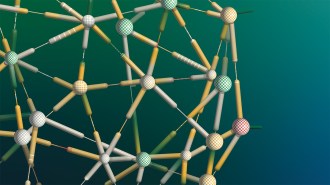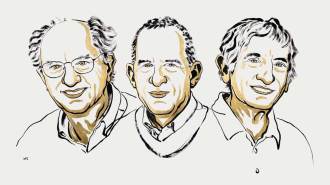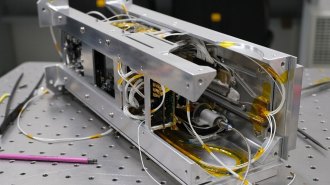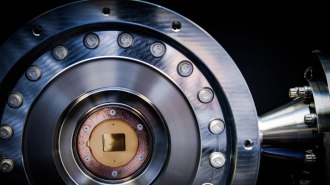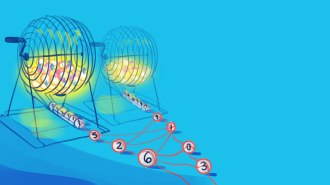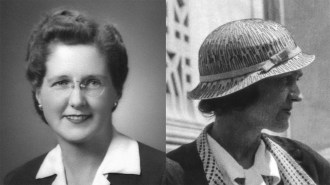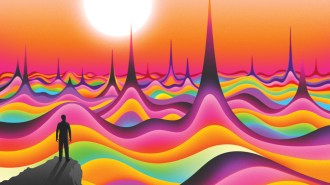Rubidium atoms mimic the Eiffel Tower, a Möbius strip and other 3-D shapes
The technique could one day be useful for atomic quantum computers
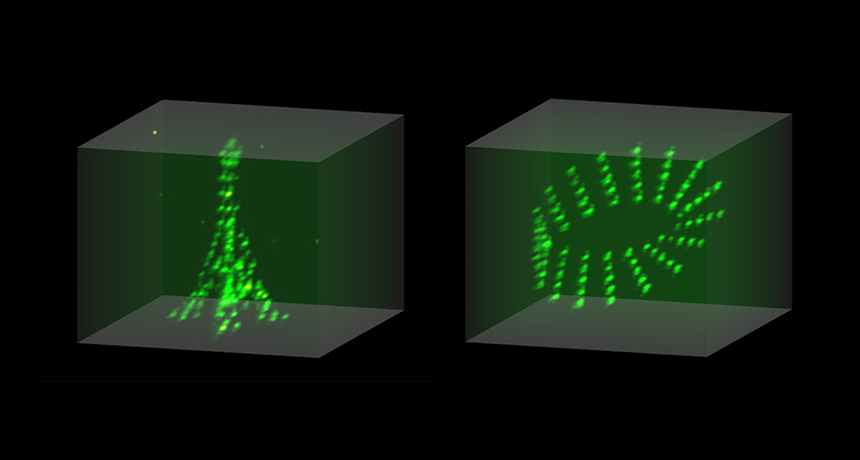
OH LA LA Using lasers, scientists arranged rubidium atoms into 3-D structures, such as the Eiffel Tower and a Möbius strip, as seen in this image which shows the average fluorescence of single atoms.
D. Barredo et al/Nature 2018
